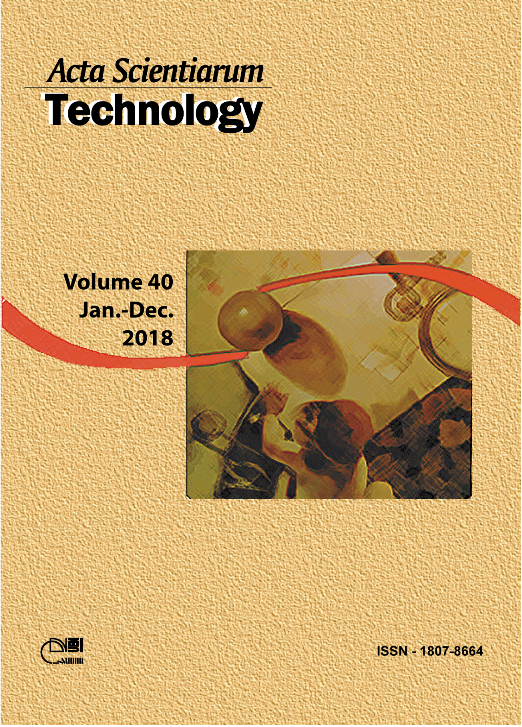<b>Evaluation of the density, volatility and anti-knock rating physical-chemical properties of alternative butanol/gasoline fuel blends
DOI:
https://doi.org/10.4025/actascitechnol.v40i1.39571Keywords:
alcohols, oxygenates, quality, specification.Abstract
Butanol, popularly known as butyl alcohol, has been recently recognized by researchers from around the world as a promising component for use in blends with gasoline, because of its very similar physical-chemical properties. In this study, butan-1-ol (n-butanol) and 2-methylpropan-1-ol (isobutanol) were blended with pure gasoline in proportions of up to 30% mass. The blends density, volatility and anti-knock rating were experimentally determined and compared with Brazilian commercial gasoline specifications. The results showed that the blends properties kept a strong dependency on the linear or branched butanol molecular structure and with the interaction effects of its hydroxyl groups. In the blends, a polynomial increase in density was observed, with a consequent volatility reduction, affecting the vapor pressure and distillation curve, especially for specified 50 and 90% evaporated temperatures (T50 and T90). Minor effects were observed at the T10 and FBP curve extremes. Octane rating and anti-knock index gains were observed, with noted increase of MON for 2-methylpropan-1-ol based blends. At the tested butanol content range, blends characteristics presented satisfactory compatibility with Brazilian gasoline specifications.
Â
Downloads
Downloads
Published
How to Cite
Issue
Section
License
DECLARATION OF ORIGINALITY AND COPYRIGHTS
I Declare that current article is original and has not been submitted for publication, in part or in whole, to any other national or international journal.
The copyrights belong exclusively to the authors. Published content is licensed under Creative Commons Attribution 4.0 (CC BY 4.0) guidelines, which allows sharing (copy and distribution of the material in any medium or format) and adaptation (remix, transform, and build upon the material) for any purpose, even commercially, under the terms of attribution.
Read this link for further information on how to use CC BY 4.0 properly.











8.png)




